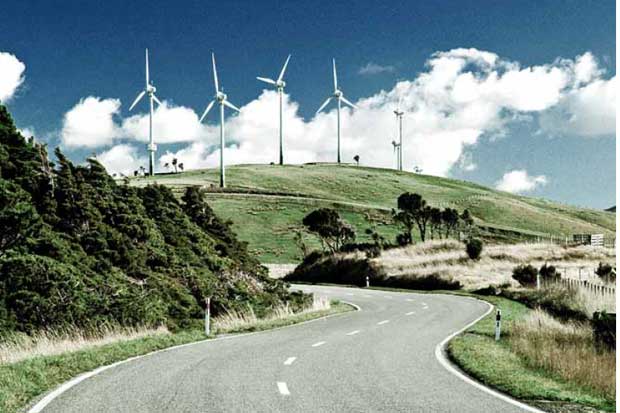State Labor governments tired of federal efforts to reduce the RET are looking for new ways to boost their renewables deployment outside the Commonwealth scheme.
Earlier this morning it was hoped the federal government would reach an agreement with Labor to return investor certainty to the clean energy industry by paring back the Renewable Energy Target from the legislated 41,000 gigawatt hours down to 33,000 GWh.
But those hopes have since been doused by the Shadow Environment Minister, Mark Butler, who has announced Labor will not support the deal unless two “red herring” conditions are removed.
The development follows a meeting late last week which saw the government renege on earlier promises to drop the requirement for biannual reviews, while reviving the spectre of classifying native wood waste, which Labor and the Greens delisted in 2011, as a renewable source of energy.
New Matilda spoke with the Director of Policy at the Clean Energy Council, Russell Marsh, about the situation yesterday.
“We’re now working hard on effectively getting the government to remove some of those technical details and focusing on working with Labor to lock away the 33,000 GWh target,” Marsh said.
How the peak industry body will stave off the grim slide the sector has suffered since early 2014 in light of Labor’s most recent announcement is difficult to say, although the Opposition’s stand on reviews may be welcome.
“The reviews are the thing that’s really killed the industry over the last couple of years,” Marsh said.
The 14 months since the government’s first RET review, chaired by self-professed climate sceptic Dick Warburton, have seen investment in renewables collapse by nearly 90 per cent.
Under Abbott, Australia has slid from being the fourth most attractive place to invest to the tenth.
“The prospect of further reviews every two years for the RET, when people [in the Coalition]may be sceptical about the underlying climate science,” the Climate Council’s Andrew Stock said, “is obviously concerning”.
Even more concerning, perhaps, is the possibility the government will continue to play its trump card of inaction.
“They should get on with the job of getting the legislation passed,” Marsh said, “and not let those other minor details get tangled up in the process”.
“It’s really only having the legislation locked away and changed that you’ll see investor certainty returning.”
As the federal Labor party continues to pressure the government to secure that legislation its state level parliamentary wings are starting to look for cleaner politics.
The Renewable Energy Target has, in many ways, actually become a barrier to states and territories developing their renewables industries.
The legislation that created the relatively ambitious 41,000 GWh target carried a clause preventing states and territories from developing their own RET-style scheme, which forces electricity retailers to purchase renewable energy certificates.

The trade off was that the higher target – expected at the time to amount to around 20 per cent of total electricity demand – would create a framework to allow them to compete for their portion of renewables, jobs and investment.
Now that the RET is set to be reduced, and investment has flatlined and the states’ ability to attract any investment through a renewables certificate scheme has been badly damaged.
“It is appropriate that the Commonwealth now reconsider this barrier to give States and Territories more policy options,” the Victorian Labor Government said on Friday.
“Cutting the RET has left Australia at risk of falling behind other nations in the transition to renewable energy and put Victorian jobs in jeopardy.”
The state’s Environment Minister was one of four Labor ministers, from Queensland, South Australia, the ACT and Victoria, who last week reaffirmed their commitment “to cooperate on climate change action, including collaboration on promoting large-scale renewable energy developments”.
A spokesperson for the South Australian government, which hosted the meeting, told New Matilda the group “will examine all impediments to states and territories acting, including Commonwealth legislation which might prevent a State and Territory Renewable Energy Target”.
For its part, the Clean Energy Council is “very keen to start looking at what the potential is for states to take forward actions in their own states to drive deployment”. Given the barriers to a RET-style scheme the most likely model is, somewhat ironically, the sort of ‘reverse auction’ the Abbott Government is using to pay polluters for carbon abatement.
An existing ‘reverse auction’ scheme in the ACT, the territory’s Environment Minister announced in February, will deliver 33 per cent of Canberra’s electricity needs by 2017 through the wind component of the program alone.
The Queensland Government, a spokesperson told New Matilda yesterday, “is also proposing a 40MW Reverse Auction”.
For the newly minted Palaszczuk Government, it’s part of a broader ‘Solar Future’, which will be overseen by an independent Queensland Productivity Commission tasked with investigating ways to achieve a 50 per cent renewable energy target by 2030.
“Here in Queensland,” a spokesperson said, “we’ve been hit hard [by the RET investment drought]with around 1,300 jobs lost under the previous LNP government”.
The South Australian Government is also concerned that “continued uncertainty would jeopardise more than $4 billion of investment in the sector in South Australia, risking thousands of jobs and the continued transition to a low-carbon economy,” a spokesperson told New Matilda.
Under Premier Jay Weatherill, South Australia is gunning for 50 per cent renewables by 2025, which it plans to fund through $10 billion of investment in low carbon energy. Recently, Weatherill signed South Australia up to an UN-supported emissions reporting scheme and announced his plan to make Adelaide carbon neutral.
Increasingly, though, as state governments take bolder moves like these to reduce emissions and promote renewables, the uncertainty cloaking the RET makes it almost impossible to attract the necessary investment.
“You have got states now who are very keen on seeing renewable energy deployment,” Marsh said, “but in terms of what mechanism they use to deploy that, it’s too early now to know where that debate is going to go”.
Donate To New Matilda
New Matilda is a small, independent media outlet. We survive through reader contributions, and never losing a lawsuit. If you got something from this article, giving something back helps us to continue speaking truth to power. Every little bit counts.



